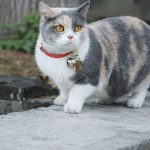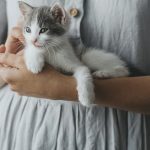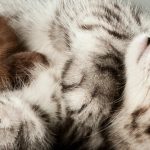Table of Contents
As a pet parent, I’ve observed that my cats seem to have an insatiable desire for food. It’s a common concern among fellow cat owners, too, who often ask why their furry friends are always on the hunt for their next meal. It’s not unusual for cats to have a healthy appetite, but there are times when this hunger can signal something more. Persistent hunger, especially when coupled with clinical signs like increased urination, weight loss, or behavioral issues, warrants a closer look.
Being a mom to a senior cat, I’m vigilant about changes in eating habits, as they can be a clue to underlying health problems. Whether it’s a medical condition or emotional factors such as boredom or loneliness, identifying the reason behind a cat’s constant hunger is crucial for their well-being. We’ll dive into some potential causes and what they could mean for our feline friends.
Understanding Your Cat’s Ravenous Hunger
Cats are known for their efficient metabolism, which can cause them to feel hungry more often. As obligate carnivores, their diet is strictly meat-based, which means the nutrients they derive from meat are quickly absorbed and utilized. This rapid use of energy often leads to a ravenous hunger, but if my cat’s desire for food seems excessive, it may be time to investigate further.
Investigating the Root Causes of a Voracious Appetite
My curiosity always leads me to investigate why my cat might be displaying an increased appetite. Intestinal parasites are one possibility, and regular vet visits that include fecal testing can help catch these hidden culprits. If my kitty’s hunger comes on suddenly and doesn’t wane, it’s essential to consider other health issues that might be at play.
The Link Between Hyperthyroidism and Increased Appetite
Hyperthyroidism is another common ailment that could explain why a cat is always hungry. It’s a condition where the thyroid gland produces too much thyroid hormone, ramping up the metabolism and leading to an increased appetite. Despite devouring more food, cats with hyperthyroidism often lose weight, making it all the more important to get a proper diagnosis and treatment.
Inflammatory Bowel Disease: A Factor in Your Cat’s Hunger
Inflammatory Bowel Disease (IBD) is a group of gastrointestinal disorders that can affect cats of any age. IBD can cause discomfort and malabsorption of nutrients, which may lead to a cat feeling constantly hungry. Managing IBD often involves dietary changes and medications to reduce inflammation and promote nutrient absorption.
Parasites: Unseen Culprits of Your Cat’s Insatiable Appetite
Parasites often go unnoticed but can be a significant reason for a cat’s insatiable appetite. Intestinal worms can rob my furry friend of vital nutrients, leading them to eat more in an attempt to satisfy their nutritional needs. Regular deworming and fecal checks are essential to keep these pesky parasites at bay.
Recognizing Aging Signs: Does It Affect Your Cat’s Eating Habits?
As cats age, their nutritional needs and appetite can change. Senior cats may experience a decline in their sense of smell or taste, leading to increased hunger if they’re trying to compensate for less enjoyment of their food. It’s important to monitor their dietary intake and adjust as necessary to ensure they remain healthy in their golden years.
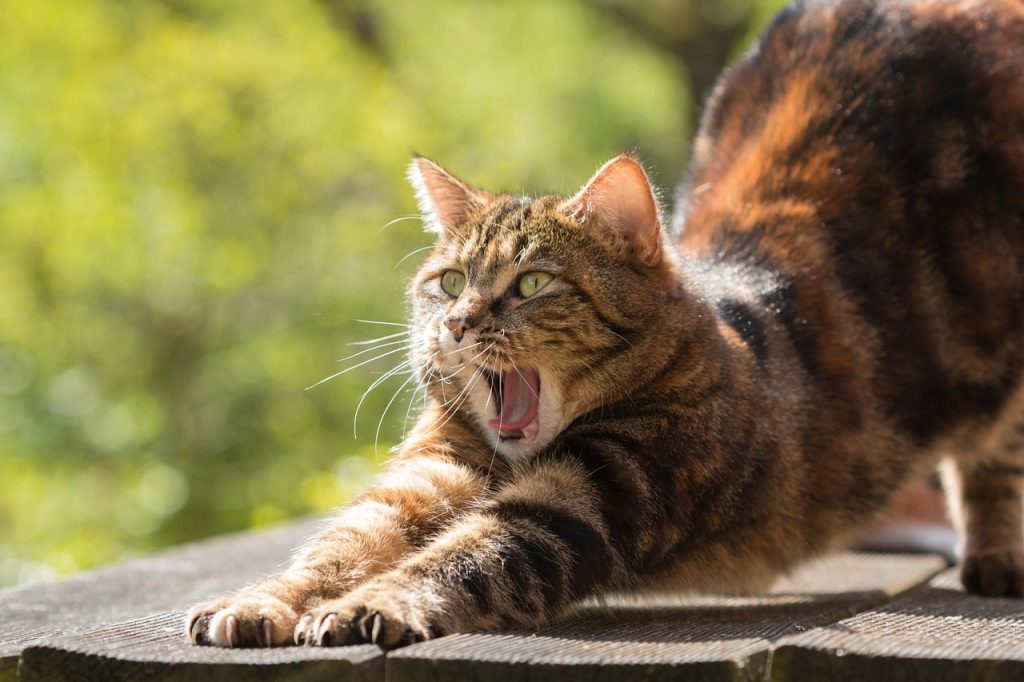
Medical Considerations for an Always Hungry Cat
When my cat is persistently hungry, it’s a signal to delve into their overall health. Conditions like diabetes mellitus can lead to increased urination and weight gain, while underlying issues may affect how cats eat. As my cat gets older, I stay alert for behavioral problems that could indicate health concerns. Regular vet checkups are crucial to maintaining my cat’s health and catching any signs of health issues early.
When to Be Concerned About Your Cat’s Non Stop Eating
If my cat suddenly starts eating nonstop, it’s a red flag that there could be an underlying medical issue affecting their gastrointestinal tract. Insulin injections might be necessary for cats with diabetes, and any abrupt changes in eating habits should prompt a visit to the vet to rule out serious health concerns.
The Veterinarian’s Role in Diagnosing Excessive Hunger
My vet is essential in determining why my cat’s weight might be fluctuating along with their appetite. They use their expertise to assess if my cat eats more due to a medical condition or other factors. Regular check-ups are vital to ensure my cat stays healthy and happy.
Practical Tips to Regulate Your Cat’s Appetite
If my cat starts acting hungry out of the blue, it’s time to consider health issues that might be at play. I always recommend scheduling a vet appointment to rule out any medical conditions. Overfeeding can be just as harmful as underfeeding, so it’s crucial to find that balance for a cat’s optimal health.
The Importance of Portion Control
Portion control is vital in managing my cat’s food intake. I measure their food carefully to ensure they’re getting the right amount of calories for their size and activity level. Too much food can lead to obesity, while too little can cause nutritional deficiencies. By controlling portions, I help my cats maintain a healthy weight and prevent related health issues.
Benefits of Scheduled Feeding Times
Having scheduled feeding times has greatly improved my cat’s appetite and overall health. It creates a routine that reduces anxiety around food. Plus, incorporating wet food in their diet helps with hydration and provides a different texture they enjoy. This approach has made a noticeable difference in their energy levels and satisfaction after meals.
Interactive Feeders: Combining Play and Portion Control
Interactive feeders are a game-changer for managing my cat’s food portions while keeping them entertained. They have to work a little to get their food, which slows down their eating and helps prevent overeating. It’s a fun way to stimulate their minds and satisfy their predatory instincts, all while controlling their calorie intake.
Opting for Higher Fiber Foods to Satisfy Hunger
Choosing higher-fiber foods is a smart move to manage my cat’s appetite. Foods like Royal Canin are formulated to keep them feeling full longer. Occasionally, I mix in some wet food to add variety and moisture to their diet. These dietary adjustments help curb begging for food and contribute to their overall health.
Dietary Adjustments and Nutritional Insights
A cat’s diet is as diverse as ours in terms of nutritional needs. I make sure they get plenty of protein and a complete range of other essential nutrients. If they start rejecting their meals, I take it as a sign to review their diet and make necessary adjustments.
Exploring the Debate: Wet vs Dry Cat Food
For indoor cats, the choice between wet and dry food depends on their individual needs. Some cats may require more moisture or have preferences in texture. I always consult my vet to determine the best balance and portion size for my cats’ specific health requirements.
The Advantages of Including Wet Food in Your Cat’s Diet
Including wet food in my cats’ diet offers a range of benefits. It’s a great source of hydration, especially for cats that don’t drink enough water. Wet food also tends to be more palatable, which can encourage picky eaters. And because it’s often richer in protein, it can help satisfy their hunger better than dry food alone.
Communication Through Behavior: Interpreting Cat Signals
As a cat mom, I’ve learned that understanding my Siamese cats’ behaviors is key to deciphering their needs, including their hunger signals. Cats communicate a lot through their actions, and a constantly hungry cat may be telling us about an underlying issue. When my cat is always hungry, I look beyond the food bowl – I observe for other signs like increased thirst or weight loss, which could signal health problems affecting a cat’s metabolism. Keeping an eye on these behaviors is essential for their well-being.
Deciphering Cat Tail Language and Behavioral Clues
Now, let’s talk about the tail – it’s like a mood ring for cats. A twitching tip might mean they’re irritable or hunting, while a puffed-up tail can be a sign of fear or aggression. If my cat’s tail is wrapped around my leg while they’re meowing at their food dish, it’s their way of saying they want more than just my attention – they’re probably hungry. But if this happens too often, it’s a hint to watch for health changes or consider if puzzle feeders or cat trees could help manage their appetite and boredom.
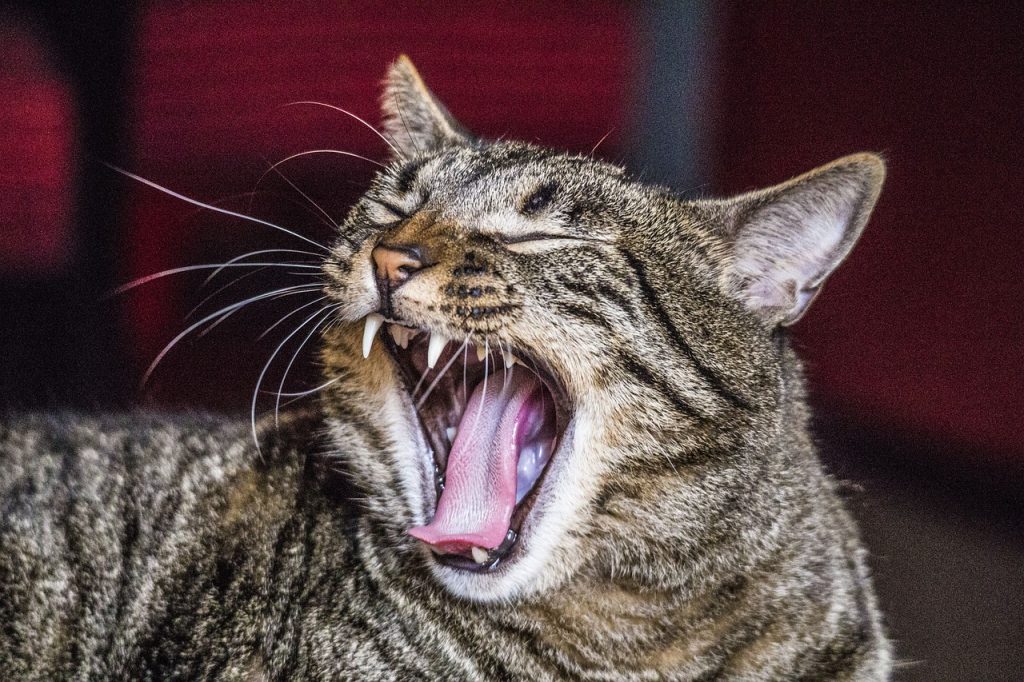
Conclusion: Satisfying the Hungry Feline
When my feline friend seems to have an endless pit for a stomach, I’ve learned that it’s not just about filling the bowl with more dry food to quell the cat’s hunger. It’s essential to consider their overall health, as issues with the cat’s thyroid gland producing too many thyroid hormones can lead to voracious appetites. Adult cats may also struggle to properly absorb glucose for energy, causing them to feel hungry more often. Regular vet check-ups are vital to ensure these conditions are managed, whether through medication or treatments like radioactive iodine therapy.
If my cat is exhibiting additional symptoms such as frequent urination, weight loss, or lethargy, it’s a clear sign for a trip to the vet. Sometimes, the solution may be as simple as deworming medications, while other times, it may involve a more in-depth approach to their diet and health. By staying attentive to my cat’s needs and maintaining open communication with the vet, I can help ensure that my cat’s hunger is satisfied healthily and happily.

Hi, I’m Zoey, a devoted mom to two charming Siamese cats. My passion lies in assisting fellow pet owners in providing optimal care for their cats. On CatsEuphoria, I share practical tips and relatable stories, inviting you to join me in appreciating the authentic bond between humans and our beloved feline companions.


